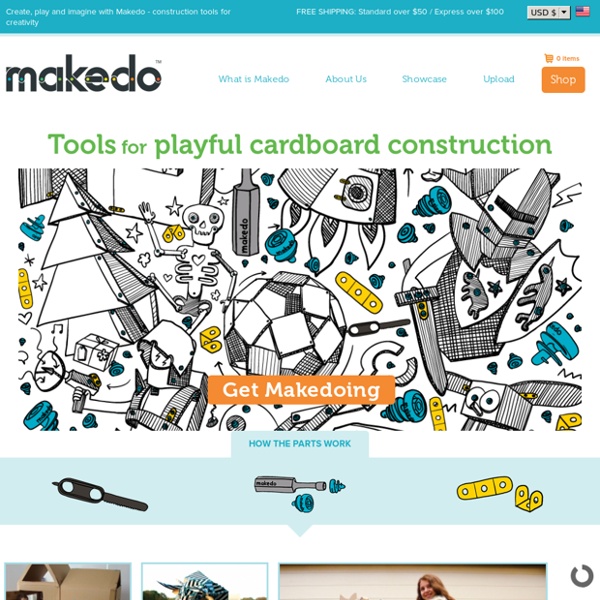



DIY - how to make a cereal box wallet D-I-Y > Food box wallet description: The cool graphics on cereal boxes are much too valuable to throw away. Turn it into something that you can store your valuables inside. STEM - Lower School Technology Educate to Innovate and the National Video Game Challenge are all White House STEM initiatives The acronym STEM stands for Science, Technology, Engineering, and Mathematics.
untitled Build, play and learn using mobile devices. Join ISTE's Mobile Learning Network in a makerspace where you can discover coding, app creation, mobile games, robotics, Minecraft and more. Recommended by ISTE’s Mobile Learning Network Purpose & objective Join ISTE's Mobile Learning Network Playground for interactive building, playing and mobile learning. Mobile Learning Playground 2015 - ISTE Mobile Learning Network Join us for interactive fun in Philly! Engage-Learn-Play! Interactive Presentations and Table Topics Presentation Station 1 Making Your Smart Devices Smarter: Gadgets ISTE 2015 ISTE 2015 will feature an amazing array of professional learning and collaborative networking opportunities. Attendees can choose from more than 1,000 sessions in a variety of formats. See our program guide for tips on how to navigate the program and session formats. Use the program search to find sessions that interest you and add them to your Favorites. What's hot Try one of our new preconference ISTE Learning Academies for a truly in-depth learning experience.
Sphero on Vimeo Sphero is a completely new type of game system. It’s the world’s first robotic ball that you control with a tilt, touch, or swing from your smartphone or tablet. You can drive Sphero, play tabletop and multiplayer games, use Sphero as a handheld controller for on-screen gameplay, learn basic programming, and even play augmented reality games. Check us out online and order your own: gosphero.com Makerspace in the Classroom - Make: During my eight-plus years of teaching students in a makerspace-style environment, I have witnessed first-hand a surge of interest in problem-based curriculum from both our youth and their parents due to its ability to engage students and to help them retain the knowledge. This is why the marriage between the classroom and the makerspace is so potent. It fills the gap between classroom theory and the physical world. Historically, sparse classroom budgets have been the root cause for a lack of modern equipment in the classroom. This made sense, of course, when an entry-level 3D printer could cost more then $20,000. Now, a derivative of the technology can be purchased with the proceeds of a single bake sale, or even through parent donation.
ISTE 2015 We'll engage in a variety of hands-on, STEM-related activities, such as student-driven robotics activities (including a experience with KATE the Robot), electrical circuitry and classroom makerspaces. Purpose & objective Purpose: The purpose of this session is to introduce teachers to the concept of the creative classroom in terms of STEM related standards. Participants will be exposed to a variety of creation-based technologies that allow students to learn STEM concepts.
Is It Project-Based Learning, Maker Education or Just Projects? Zak Malamed of StuVoice.Org mentioned in a student voice panel that when given projects by teachers to complete, it was often just another “thing” to get done, just like a paper or worksheet. I have seen lessons shared by teachers that they called Project-Based Learning, Inquiry Learning, or Maker Education, but upon close examination they appear to be another form of direct instruction with a hands-on activity thrown into the mix. These activities had no connections and very limited relevancy to the real lives of students. Students using scissors, markers, drawings, or a Web 2.0 tool does not make a PBL or Maker Education curricular unit.
The Research Behind Choice and Inquiry-Based Education Updated: I’ve updated this post and page since publishing my most recent book about student choice. I’d love for you to add resources you’ve found in the comments section of this post so I can add them to the list! Since experimenting with “Genius Hour and 20% Time” in my class a few years ago, I’ve been fascinated by the research and history of this practice in education and the business world. This has led me down a long road to eventually writing Inquiry & Innovation in the Classroom (published by Routledge) on inquiry-driven education and choice-based learning experiences.
Katherine von Jan: Pursue Passion: Demand Google 20% Time at School Ever wonder why students struggle with picking a major in college? When was the last time students were asked what they'd like to study in school and given the time to pursue their own interests? Ask a kid what they want for their birthday, and they'll tell you 10 things. Ask them what they want to learn? They don't know, because they've never been asked.